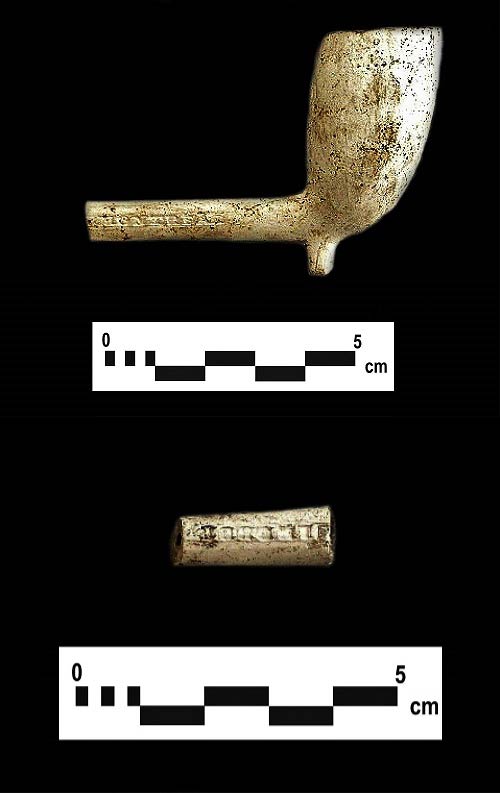In honour of Canada’s 146th birthday, we thought we would feature several artifacts from our archives that we think represent Canada. They just don’t get anymore Canadian than this. Enjoy.

1 The first artifact in this series is a Rockingham teapot found at the Bishop’s Block site in downtown Toronto. Rockingham is a mottled brown glaze often found on inexpensive, utilitarian earthenware vessels that were popular from the mid-nineteenth century to the early-twentieth century (Claney 2004:xiii). The glaze is particularly popular on teawares of this time period. The decorative moulding on the body, spout and handle is meant to resemble wood and it also includes a beaver on a log, surrounded by maple leaves.
2 This next artifact, also from Bishop’s Block, is a moulded ironstone saucer (6.2″ in diameter) decorated with a variant of the Wheat pattern known as the “Canada” pattern – a name given by the manufacturers. The Canada pattern is composed of wheat and poppies and was introduced by Clementson Brothers manufacturers in March of 1877 (Sussman 1985:67). On the underside of the saucer is a black-printed mark with the words “ROYAL OPAQUE CHINA” within a belt encircling “‘CANADA.'”
3 The last items in our series are two pipe fragments from the Toronto General Hospital site in downtown Toronto. The pipe stems have the names of Canada’s now two largest cities – Toronto and Montreal – impressed on them. Thomas Kenyon (1981:8) explains that “the lettering on white clay pipe stems usually indicates the manufacturer’s name and city.” One pipe comprises a complete bowl with a partial stem and spur. The letters “T” and “D” are impressed on the bowl to face the smoker and the maker’s mark on the stem reads “HENDERSON’S” and “MONTREAL.”
The second piece is a small stem fragment with an impressed maker’s mark that reads “DAVIDSON” and “TORONTO,” which was possibly used for advertisement, as a similar pipe has been found with “DAVIDSON AND HAY” and “TORONTO” impressed on the stem, representing the Toronto grocer, Davidson and Hay, who operated between 1885-1915 (Smith 1985:9).











